Postcards featuring dance often capture the complete essence of movement. They rally the spirit. They personify expression. A postcard that showcases a dancer in graceful poses, embodying a variety of styles, from ballet to salsa, each tells a unique story. The vivid colors and dynamic imagery evoke energy and passion; they transport viewers to faraway places like tiny but lively studios or to grand theaters where music fills the air from an orchestra pit.
The postcards, we see today, are from an Austrian publisher. They are quite old (undivided back) but they still serve, in a most delightful way, as reminders of the artistry and beauty of dance. They may also be inspiring. Get up and dance!
Emotion is often driven by effort and effort is totally personal. So let’s dance! It all starts with an invitation:
Invitation: (in·vi·ta·tion) is a noun. It is a request put forward to invite someone to go somewhere or to do something.
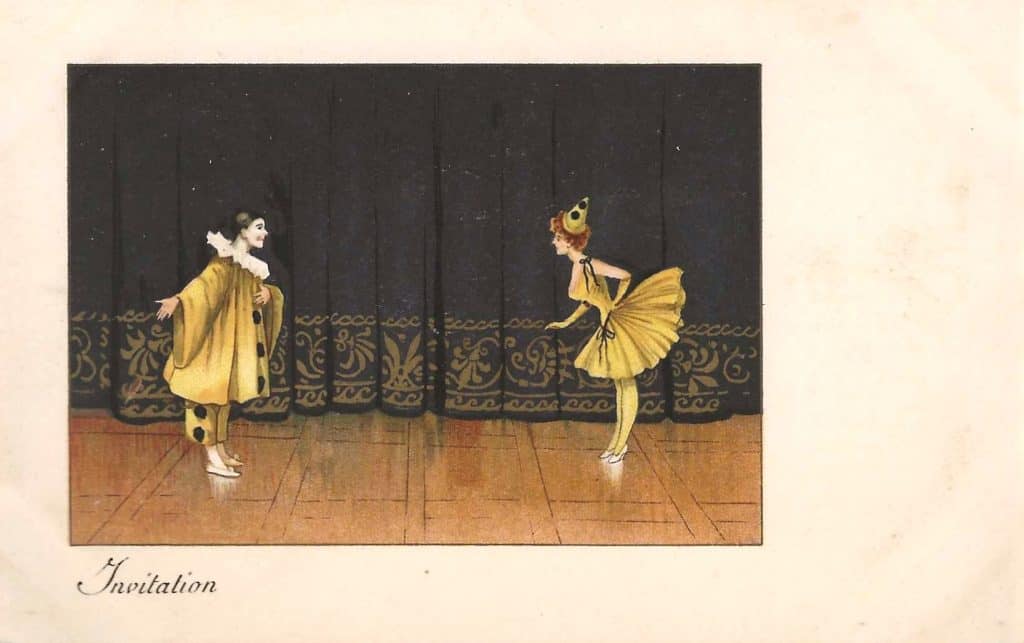
Inviting someone to dance can be a delightful and engaging experience. Start by making eye contact and smiling to create a sense of connection. Approach them with confidence and warm energy. You might say something like, “I’d love to dance with you—would you join me?” If that seems awkward, alternatively, you can pay them a compliment or mention a fact in your surroundings and conclude with a gesture toward the dance floor.
Ensure your tone is light-hearted and relaxed to ease potential nervousness. If they decline, be gracious and thank them. If they accept, an extended hand will suffice as a pointer to the dance floor. Remember, the key is to be genuine and respectful, making it a fun invitation for both of you. Enjoy the moment!
Salutation: (sal·u·ta·tion) is a noun. A gesture made as a greeting or acknowledgment.
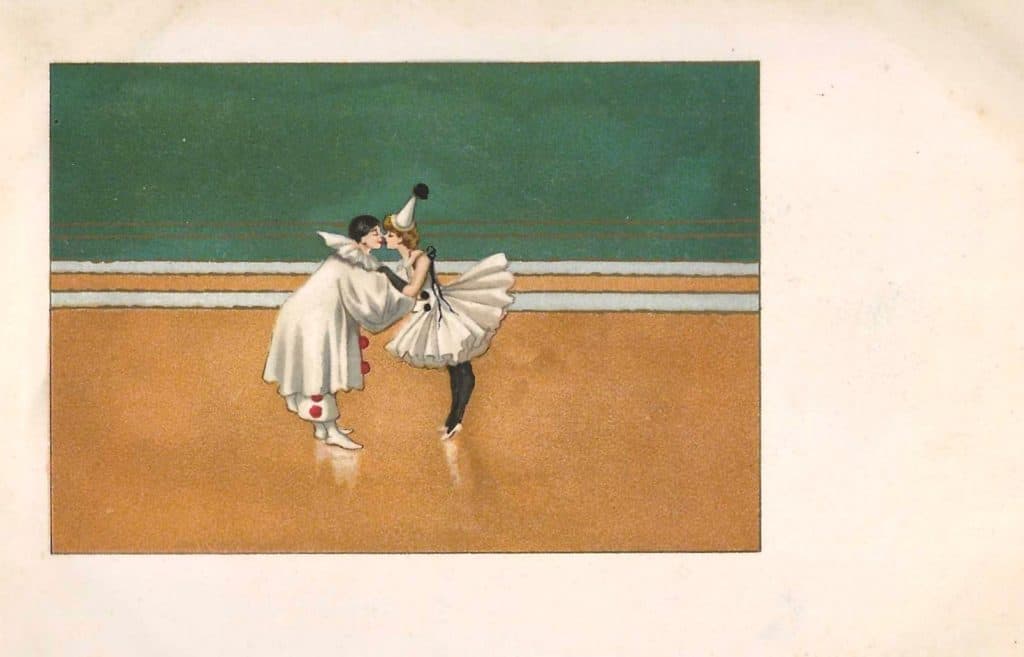
Salutations in dance serve as a powerful means of communication and respect. These gestures, often occurring at the beginning and end of a performance, be it formal or casual, create a communal atmosphere. The salutation is the initial bond between the dancers and the audience members who witness it. Common forms of salutations include a bow or curtsy, a faux-kiss or a European style hug (hands on shoulders) or other specific movements that convey one’s intention.
In contemporary dance, salutations may also evolve into more fluid expressions, allowing dancers to personalize their interactions. This practice not only fosters a sense of unity and shared purpose but also highlights the importance of mindfulness in movement. By incorporating salutations, dancers honor their art form to their community.
Exultation: (x·ul·ta·tion) a noun. A feeling of triumph or elation.
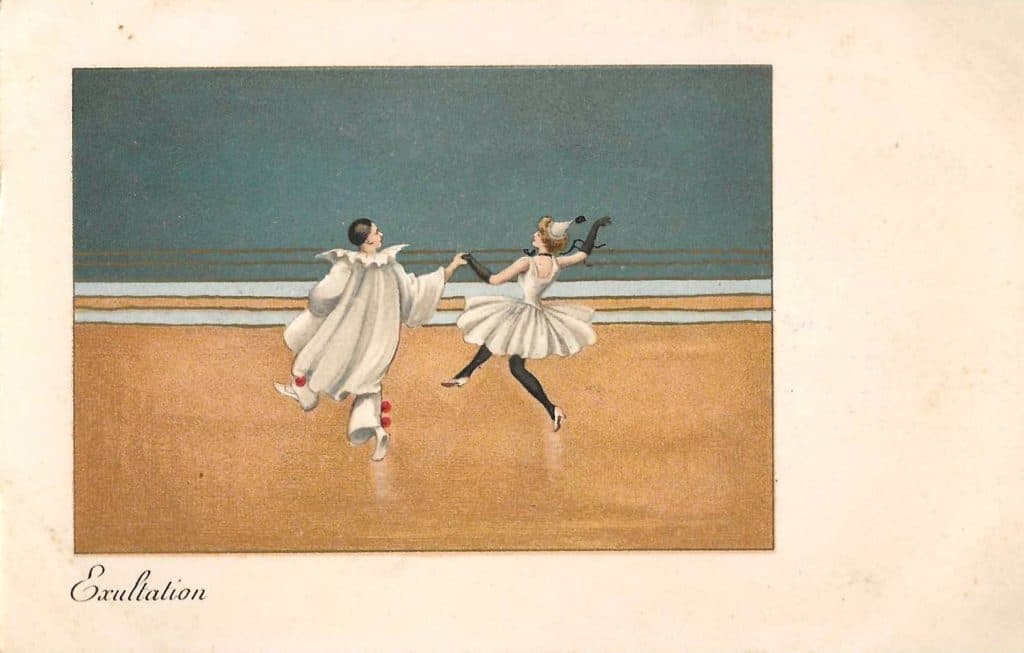
Exultation in dance embodies a profound sense of triumph, exchanging physical movement for deep emotions. When expressing this feeling, a dancer’s body radiates joy and victory, each movement infused with vibrant energy. The rhythm of the music inspires an exhilarating flow, allowing the dancer to connect with the audience on an emotional level. Leaps, spins, and expansive arm gestures symbolize liberation and accomplishment, while facial expressions reflect sheer delight. A dancer’s technique showcases the mastery of movement, turning every step into a celebration of achievement. Whether through contemporary, ballet, or folk styles, exultation emerges from the heart, allowing performers to summarize their struggles and ultimate victories. This is how dance transforms the stage into a canvas where triumph is painted with every movement.
Supplication: (sup·pli·ca·tion) a noun. An action of asking or begging for something earnestly.
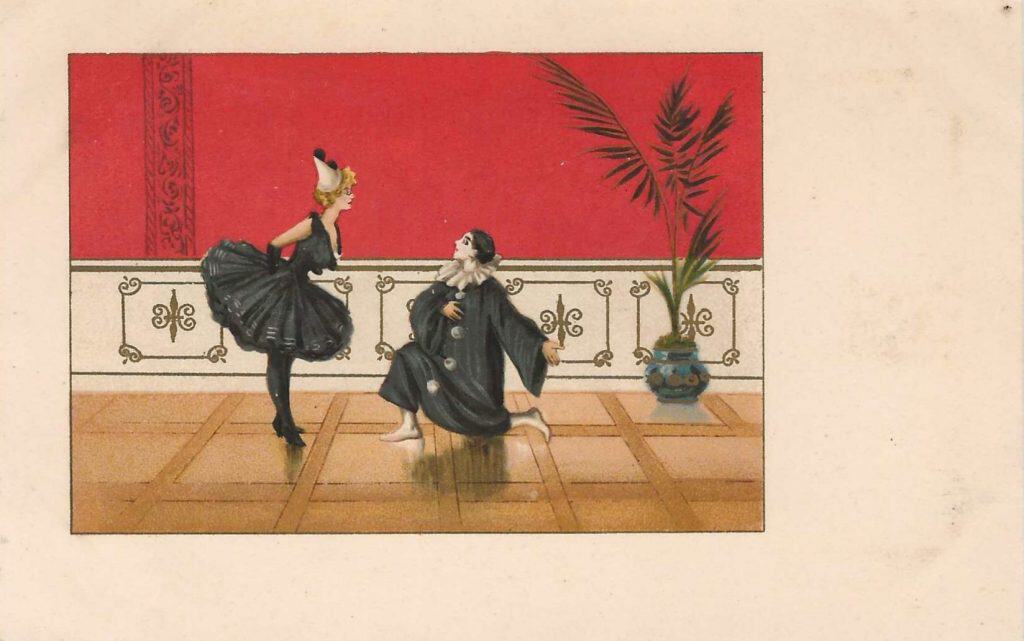
Expressing supplication in dance involves a deep connection to the themes of humility and yearning. And even reverence at certain times. To convey this sentiment, dancers can utilize body language and movement qualities that reflect vulnerability and openness. Slow, fluid movements with lowered heads and open arms can symbolize a plea or request, inviting the audience to feel the weight of the dancer’s intentions.
It is only when a dancer uses grounded footwork that success is achieved. There is a feeling of being firmly rooted while reaching for something greater. Small, intricate gestures, such as clasped hands or gentle reaches toward the sky, can evoke a sense of longing or devotion.
Connecting with the rhythm of music, soft facial expressions and sincere eye contact can further emphasize the emotional core of a dance. By balancing strength and fragility, dancers create a powerful portrayal of supplication, inviting viewers to experience a longing and desire for mercy.
Jubilation: (ju·bi·la·tion) a noun. Another feeling of great happiness.
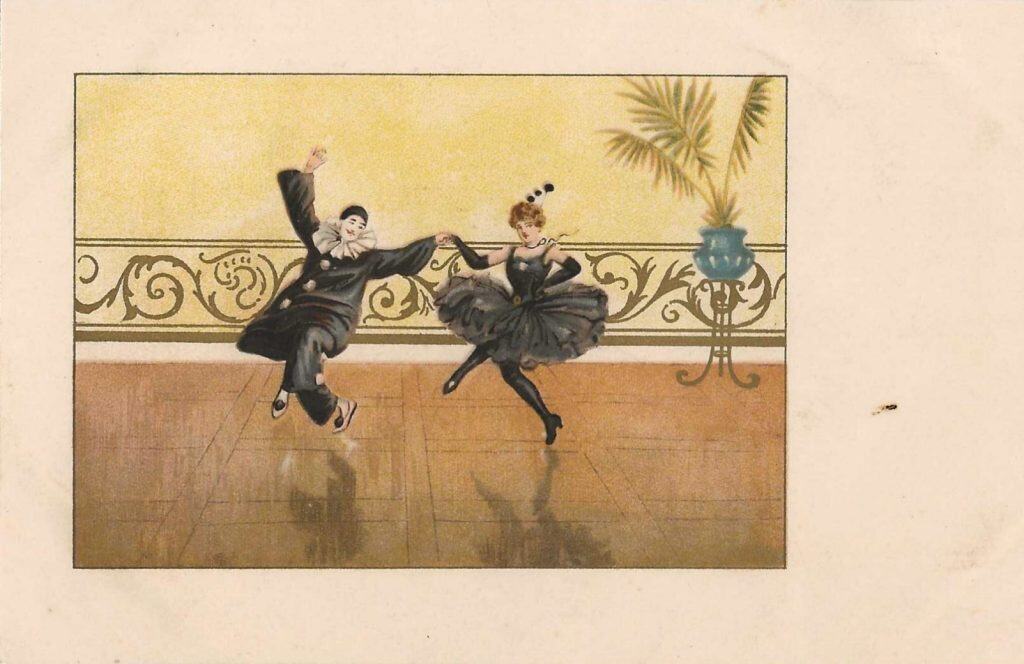
To express jubilation through dance, one needs to focus on energetic and uplifting movements that mirror the heart’s inner-most feelings. Jazz dances or salsa can effectively embody jubilation since each one incorporates near acrobatic movements. An important aspect of portraying jubilation is the emphasis on timing and rhythm. A dancer must be in tune to the tempo of a melody. Significant facial expressions, like broad smiles and sparkling eyes, enhance the portrayal of joy. Group dancing is another way to amplify jubilation, especially when the collective energy of several dancers inflates the joyous atmosphere. Remember: like laughing, jubilation is highly contagious.
Appreciation: (ap·pre·ci·a·tion) a noun. A state of gratitude or an emotional recognition of the good in someone.
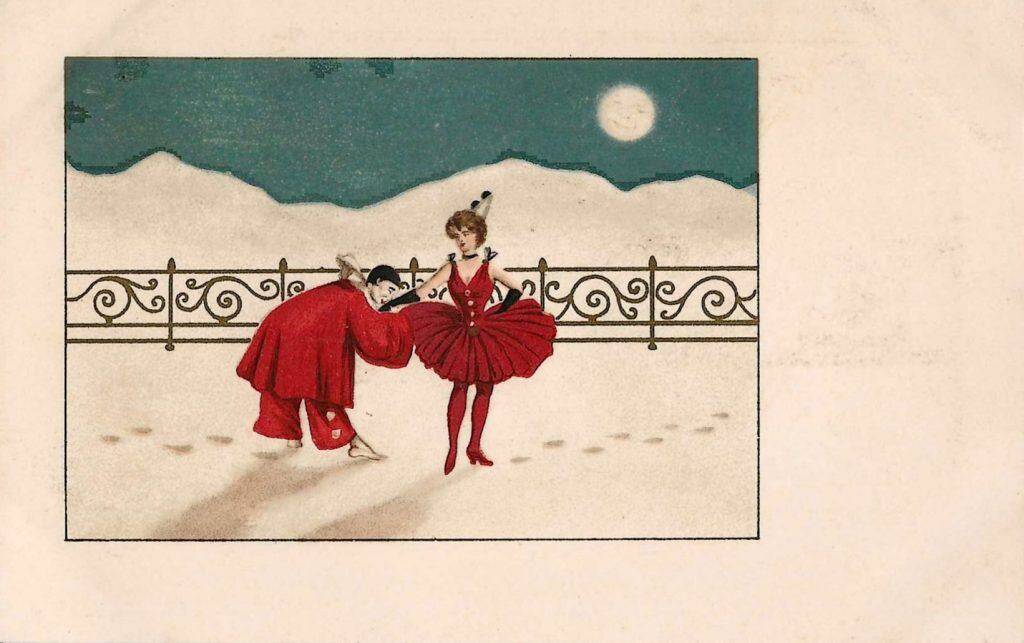
Appreciation, whether for another person or an experience, requires a more nuanced approach in choreography. A dancer must use slower but very controlled movements to convey a sense of reflection and gratitude. Ballet and many contemporary dances lend themselves to this emotion by emphasizing grace and fluidity. For a truer interpretation a dance of appreciation uses movements that extend limbs gently into space that reach forward to embrace beauty. A dancer may often employ stillness, by pausing to let the audience absorb what they are seeing. There are dozens of props, such as a scarf or a flower that can enhance appreciation.
***
“Excuse me, dear lady,” he asked, “would you care to join me in a dance?”
What beautiful postcards. I love how each one expresses something different.
Thank you. I like this set and discovered it about 4 years ago. It took me about that long to find the full set of matching cards as I recall that there were several printings, each with modest variations regarding the publisher, Max Munk of Vienne. My cards are each titled and I copy here the cards where the title is at variance with your posts. One of my favourite sets of cards.
I had hoped to attach all images to the one comment, but was unable to do so.
Adoration
Declaration (with image this time)
Thanks for showing these examples from your collection, Bob!
These are lovely Thankyou
Very original article with a great set of early postcards. Thanks.